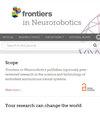通过通用拓扑感知变换器模型进行三维手部姿态和网格估算
IF 2.8
4区 计算机科学
Q3 COMPUTER SCIENCE, ARTIFICIAL INTELLIGENCE
引用次数: 0
摘要
在人机交互(HRI)中,精确的三维手部姿势和网格估计至关重要。然而,在严重自闭和高度自相似的情况下推断合理准确的姿势仍然是一个固有的挑战。为了减轻 HRI 过程中因关节不可见和相似而造成的模糊性,我们提出了一种名为 HandGCNFormer 的新拓扑感知变换器网络,以深度图像为输入,将手部运动拓扑的先验知识纳入网络,同时对远距离上下文信息进行建模。具体来说,我们提出了一种带有额外节点偏移图卷积层(NoffGConv)的新型 Graphformer 解码器。Graphformer 解码器优化了 Transformer 和 GCN 之间的协同作用,捕捉了关节之间的长距离依赖关系和局部拓扑连接。在此基础上,我们用新颖的拓扑感知头取代了标准的 MLP 预测头,从而更好地利用局部拓扑约束来获得更合理、更准确的姿势。我们的方法在四个具有挑战性的数据集(包括 Hands2017、NYU、ICVL 和 MSRA)上实现了最先进的 3D 手部姿态估计性能。为了进一步证明我们提出的 Graphformer 解码器和拓扑感知头的有效性和可扩展性,我们将框架扩展为 HandGCNFormer-Mesh,用于三维手部网格估计任务。扩展框架有效地将形状回归器与原始 Graphformer 解码器和拓扑感知头集成在一起,生成了马诺参数。HO-3D 数据集包含各种具有挑战性的遮挡物,在该数据集上的结果表明,与之前最先进的三维手部网格估计方法相比,我们的 HandGCNFormer-Mesh 取得了具有竞争力的结果。本文章由计算机程序翻译,如有差异,请以英文原文为准。
3D hand pose and mesh estimation via a generic Topology-aware Transformer model
In Human-Robot Interaction (HRI), accurate 3D hand pose and mesh estimation hold critical importance. However, inferring reasonable and accurate poses in severe self-occlusion and high self-similarity remains an inherent challenge. In order to alleviate the ambiguity caused by invisible and similar joints during HRI, we propose a new Topology-aware Transformer network named HandGCNFormer with depth image as input, incorporating prior knowledge of hand kinematic topology into the network while modeling long-range contextual information. Specifically, we propose a novel Graphformer decoder with an additional Node-offset Graph Convolutional layer (NoffGConv). The Graphformer decoder optimizes the synergy between the Transformer and GCN, capturing long-range dependencies and local topological connections between joints. On top of that, we replace the standard MLP prediction head with a novel Topology-aware head to better exploit local topological constraints for more reasonable and accurate poses. Our method achieves state-of-the-art 3D hand pose estimation performance on four challenging datasets, including Hands2017, NYU, ICVL, and MSRA. To further demonstrate the effectiveness and scalability of our proposed Graphformer Decoder and Topology aware head, we extend our framework to HandGCNFormer-Mesh for the 3D hand mesh estimation task. The extended framework efficiently integrates a shape regressor with the original Graphformer Decoder and Topology aware head, producing Mano parameters. The results on the HO-3D dataset, which contains various and challenging occlusions, show that our HandGCNFormer-Mesh achieves competitive results compared to previous state-of-the-art 3D hand mesh estimation methods.
求助全文
通过发布文献求助,成功后即可免费获取论文全文。
去求助
来源期刊

Frontiers in Neurorobotics
COMPUTER SCIENCE, ARTIFICIAL INTELLIGENCER-ROBOTICS
CiteScore
5.20
自引率
6.50%
发文量
250
审稿时长
14 weeks
期刊介绍:
Frontiers in Neurorobotics publishes rigorously peer-reviewed research in the science and technology of embodied autonomous neural systems. Specialty Chief Editors Alois C. Knoll and Florian Röhrbein at the Technische Universität München are supported by an outstanding Editorial Board of international experts. This multidisciplinary open-access journal is at the forefront of disseminating and communicating scientific knowledge and impactful discoveries to researchers, academics and the public worldwide.
Neural systems include brain-inspired algorithms (e.g. connectionist networks), computational models of biological neural networks (e.g. artificial spiking neural nets, large-scale simulations of neural microcircuits) and actual biological systems (e.g. in vivo and in vitro neural nets). The focus of the journal is the embodiment of such neural systems in artificial software and hardware devices, machines, robots or any other form of physical actuation. This also includes prosthetic devices, brain machine interfaces, wearable systems, micro-machines, furniture, home appliances, as well as systems for managing micro and macro infrastructures. Frontiers in Neurorobotics also aims to publish radically new tools and methods to study plasticity and development of autonomous self-learning systems that are capable of acquiring knowledge in an open-ended manner. Models complemented with experimental studies revealing self-organizing principles of embodied neural systems are welcome. Our journal also publishes on the micro and macro engineering and mechatronics of robotic devices driven by neural systems, as well as studies on the impact that such systems will have on our daily life.
 求助内容:
求助内容: 应助结果提醒方式:
应助结果提醒方式:


